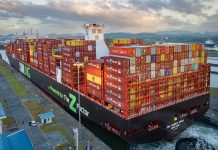
The widely forecast US$4,000/FEU box between China and US east coast ports has landed as soaring demand from US consumers meets clever supply-side management from carriers to create a highly unexpected bull run in freight rates.
A fourth successive general rate increase, introduced by shipping lines on 1 September, tipped spot rates between the world’s two largest economies above the US$4,000/FEU barrier for the first time, with Freightos registering a US$4,125/FEU rate, up 6% from last week, on the China-US East Coast trade lane (FBX03). A similar box on the China-US West Coast was up (FBX01) 3% in the same period to US$3,436/FEU, more than twice the rate recorded this time last year.
Few would have thought that tariffs introduced by the US administration coupled with a global pandemic would have created the recent runaway rate scenario, according to Eytan Buchman, chief marketing officer of the online marketplace, Freightos.
“As this recent demand surge suggests, anticipation that the trade war and pandemic would lead to a shift away from reliance on Chinese exports hasn’t been realised yet,” he said.
“Exports from China hit their second-highest monthly total in July, as the government took steps to stimulate the manufacturing sector following the reopening of its economy.”
The rush to replenish depleted inventories in the US has put pressure on the ports on the west coast with Long Beach posting its busiest ever month.
July was the busiest month in the port’s 109-year history with 753,081TEU moving through its terminals, topping a record set two years ago.
“Supply chain workers at the Port of Long Beach expertly handled a welcome surge in cargo that was brought on due to pent-up demand by consumers,” said Mario Cordero, executive director of the Port of Long Beach. “It was a good month, a bright spot, in the midst of the devastating effects of the coronavirus on the economy.”
Imports were up 20.3% to 376,807TEU, year-on-year while exports grew 24.1% to 138,602TEU. Empty containers being repositioned were up 20.8% to 237,672TEU. It took total volumes through the Port to 4,186,115TEU during the first seven months of the year, down 2.8% year-on-year.
Rainbow Blue Nelson
Americas Correspondent





